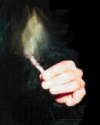
On 27 Nov 1826, John Walker (1781-1859), an English pharmacist from Stockton-on-Tees, invented the first practical, strike-anywhere, friction match, which he first sold on 7 Apr 1827, though he refused to patent his creation. He used three-inch splints of wood, tipped with potassium chlorate, antimony sulphide, and gum arabic. The match head was ignited by drawing it through a fold of fine glasspaper. An article on Matches in the Pharmaceutical Journal (1871) gives an informative history of matches. The use of phosphorus was abandoned as too dangerous. Doebereiner invented a lamp using zinc, sulphuric acid and platinum that produced a flame on demand, like a cigar lighter. As you can read, there was an interesting range of attempts in the history of matches to produce the reliable product as we now know it.

On 27 Nov 1922, Howard carter entered the Antechamber to the tomb of Tutankamun. Today's book pick is: The Discovery of the Tomb of Tutankhamen (Egypt), by Howard Carter, A. C. Mace. Written like a diary, the reader is always in suspense waiting for what will follow next, as the painstaking, step-by-step process of excavation was undertaken. The wonders of the treasure-filled inner chamber are described. In this classic, must-have book, the preceding events and results of the discovery are documented with 106 on-the-spot photographs. It is not simply a description of the tomb or complicated archeological jargon, but was written to inform the curious public. A biography of Lord Carnarvon who financed the expedition, is followed in subsequent chapters by what they knew of King Tut at the time, and the background of the Valley of the Kings and a discussion on the theft of antiquities.
It is available from Amazon, typically about New from $1.99. Used from $1.50. (As of earlier time of writing - subject to change.)
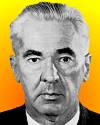 | Mathematics education is much more complicated than you expected, even though you expected it to be more complicated than you expected. |
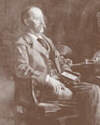 | There is no such thing as absolute truth and absolute falsehood. The scientific mind should never recognise the perfect truth or the perfect falsehood of any supposed theory or observation. It should carefully weigh the chances of truth and error and grade each in its proper position along the line joining absolute truth and absolute error. |
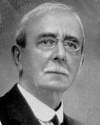 | The brain is waking and with it the mind is returning. It is as if the Milky Way entered upon some cosmic dance. Swiftly the head-mass becomes an enchanted loom where millions of flashing shuttles weave a dissolving pattern, always a meaningful pattern though never an abiding one. |
| Before you look at today's web page, see if you can answer some of these questions about the events that happened on this day. Some of the names are very familiar. Others will likely stump you. Tickle your curiosity with these questions, then check your answers on today's web page. | |
| Births | |
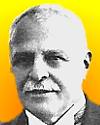 | Giovanni Giorgi, born 27 Nov 1871, was an Italian who proposed a widely used system for the definition of electrical, magnetic, and mechanical units of measurement. He developed the Giorgi International System of Measurement in 1901. Originally, he suggested that the basic units of scientific measurement be the metre, kilogram, second, and joule. In 1960, this system was subsequently endorsed by the General Conference of Weights and Measures, though the joule was replaced by another basic unit. What unit replaced the joule? |
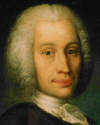 | Anders Celsius, born 27 Nov 1701, was an astronomer, physicist and mathematician who is famous for the temperature scale he developed (often called centigrade scale) for measuring temperature What was Celsius' nationality? |
| Deaths | |
 | Richard Christopher Carrington (1875-1826) was an English astronomer who discovered the equatorial acceleration of the Sun; i.e., that it rotates faster at the equator than near the poles. Carrington also was the first to observe a sun flare (1859). His observations of which penenomenon led to his discovery of the equatorial acceleration of the Sun? |
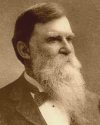 | Clement Studebaker (1831-1901) co-founded a family firm with Henry Studebaker. In 1852, they opened a blacksmith shop in South Bend, Indiana that became the world's largest producer of a certain product. The company, after Clement's death, began building both electric and gasoline powered automobiles. What was the major product that established the Studebaker company in the 19th century? |
| Events | |
 | On 27 Nov of a certain year, the electric motor was invented by American inventor Thomas Davenport. Though several other inventors had experimented with motors, Davenport was the first to secure a US patent for his direct current motor. In which decade did Davenport invent his DC motor? |
 | On 27 Nov 1826, John Walker (1781-1859), an English pharmacist, invented the first practical, strike-anywhere, friction match—splints of wood, tipped with potassium chlorate, antimony sulphide, and gum arabic, ignited by drawing it through a fold of fine glasspaper. By 1829, similar matches called “Lucifers” were sold throughout London. Their difference was added sulphur to aid combustion, and white phosphorus. Matchmaking workers quickly developed a bone disease from the phosphorus. What was this disease popularly called? |
Fast answers for the previous newsletter for November 26: Law of Octaves • “tarmac” - asphalt • Howard Carter • France • decade containing the year 1966.
 If you enjoy this newsletter, the website, or wish to offer encouragement or ideas, please send feedback by using your mail reader Reply button.
If you enjoy this newsletter, the website, or wish to offer encouragement or ideas, please send feedback by using your mail reader Reply button. Your click on a Facebook, StumbleUpon, or other social button on the site webpages is also a welcome sign of appreciation. Thank you for using them.
© This newsletter is copyright 2020 by todayinsci.com. Please respect the Webmaster's wishes and do not put copies online of the Newsletter — or any Today in Science History webpage. (If you already have done so, please remove them. Thank you.) Offline use in education is encouraged such as a printout on a bulletin board, or projected for classroom viewing. Online, descriptive links to our pages are welcomed, as these will provide a reader with the most recent revisions, additions and/or corrections of a webpage. For any other copyright questions, please contact the Webmaster by using your mail reader Reply button.
--
If you do not want to receive any more newsletters, Unsubscribe
To update your preferences and to unsubscribe visit this link
Executive Real Estate Business Class
-
"It was like a man with wings. It wasn't like anything you'd see on TV or in a monster movie." ...
About the publisher
Search This Blog
Blog Archive
-
▼
2020
(1542)
-
▼
November
(164)
- Last day to save! Take advantage of Black Friday d...
- On This Day for November 30 - Independence of Barb...
- Newsletter for Monday 30 November.
- November 30: Cnut the Great, the 1st State to Abol...
- FAMILY: Happiness in a stressful season
- Medieval monarchs | WW1 quiz | Marlborough pie recipe
- On This Day for November 29 - United Nations resol...
- Newsletter for Sunday 29 November.
- November 29: Edison's Phonograph, Schrödinger's Ca...
- The Compass: Italy
- See the past through a different lens with Nat Geo...
- On This Day for November 28 - Opening of Tehrān Co...
- Newsletter for Saturday 28 November.
- November 28: Exploration, Invention and a Day of F...
- PHOTOGRAPHY: How adversity inspired discovery for ...
- The gift of curiosity lasts a lifetime. Give Nat G...
- Very Weird — And Very Real — Facts About The Victo...
- Black Friday Deals: Save 50% on a Britannica Membe...
- Black Friday Savings at the HISTORY Store
- On This Day for November 27 - Nobel Prizes establi...
- Newsletter for Friday 27 November.
- November 27: The Model Parliament, the 1st Native ...
- ANIMALS: The pets I’m thankful for
- A Very Special Thanksgiving Edition Of Our Newsletter
- On This Day for November 26 - Premiere of Casablan...
- Newsletter for Thursday 26 November.
- YOUR WEEKLY ESCAPE: They live in a legendary under...
- November 26: 1st National Thanksgiving, Alice in W...
- SCIENCE: The prehistoric truth about turkeys
- UPDATED: Every Membership Now 50% Off!
- Every Membership Now 50% Off!
- Demystified: Is the Ozone Layer Finally Healing It...
- On This Day for November 25 - Japanese military ba...
- Newsletter for Wednesday 25 November.
- November 25: Dynamite and The Mousetrap
- TRAVEL: Keeping your family safe over the holidays
- Meet The Real-Life "Dexter" — Serial Killer Of Mur...
- On This Day for November 24 - Dutch discovery of T...
- Newsletter for Tuesday 24 November.
- November 24: 1st Transit of Venus Observed, Van Di...
- HISTORY: The faces of COVID-19’s toll
- New This Week on History News Network
- On This Day for November 23 - Ley Juárez passed, I...
- Newsletter for Monday 23 November.
- November 23: On This Day in History
- FAMILY: Keeping the holidays familiar for your kids
- The many faces of Anne Boleyn | Take our Tudors qu...
- On This Day for November 22 - U.S. President John ...
- Newsletter for Sunday 22 November.
- November 22: Vasco da Gama Rounds the Cape and JFK...
- The Compass: Hawaii
- On This Day for November 21 - Signing of Mayflower...
- Newsletter for Saturday 21 November.
- November 21: The Mayflower Compact, a Jewish state...
- CORONAVIRUS UPDATE: 200,000 new cases in a single day
- PHOTOGRAPHY: Switching tactics to chronicle the wo...
- How The Kennedy Curse Has Tormented America's Firs...
- On This Day for November 20 - Mexican Revolution l...
- The Roundup Top Ten for November 20, 2020
- Newsletter for Friday 20 November.
- November 20: Uyghurs Conquer China, the Napoleonic...
- ANIMALS: The deadly thing about snakes
- Give your kids a love of learning with Nat Geo Kid...
- #1 Gift for Families this Holiday - On Sale Now!
- On This Day for November 19 - Anwar Sadat's visit ...
- Newsletter for Thursday 19 November.
- November 19: "Four Score and Seven Years Ago..."
- YOUR WEEKLY ESCAPE: Not all of the dinosaurs died
- SCIENCE: Can we make North America’s greatest reso...
- The Latest News from History News Network
- On This Day for November 18 - Jonestown massacre, ...
- Newsletter for Wednesday 18 November.
- November 18: St. Peter's Basilica is Consecrated a...
- TRAVEL: Best of the World 2021
- Black Friday Early Access! 50% off Holiday Bundles...
- Photographer Captures the Impacts of Climate Chang...
- On This Day for November 17 - Arnold Schwarzenegge...
- Newsletter for Tuesday 17 November.
- November 17: On This Day in History
- HISTORY: Thanksgiving in tough times
- New This Week on History News Network
- On This Day for November 16 - Election of Bhutto a...
- Newsletter for Monday 16 November.
- November 16: Francisco Pizarro Ambushes Atahualpa,...
- FAMILY: Keeping kids kind during this stressful time
- The Crown S4 | Henry VIII's seventh wife | Vikings...
- On This Day for November 15 - Palestinian statehoo...
- Newsletter for Sunday 15 November.
- November 15: The Scramble for Africa and the Vietn...
- The Compass: Peru
- On This Day for November 14 - Eritrea made a provi...
- Newsletter for Saturday 14 November.
- CORONAVIRUS UPDATE: The U.S. enters uncharted terr...
- November 14: Kirch's Comet, Einstein's Theory of L...
- PHOTOGRAPHY: In the land of Arctic dreams
- The Unhinged Soldier Who Avenged Lincoln's Assassi...
- The Roundup Top Ten for November 13, 2020
- On This Day for November 13 - Terrorist attacks in...
- Newsletter for Friday 13 November.
- ANIMALS: Images to surprise and delight during thi...
-
▼
November
(164)
-
Blogroll
-
About
HistoryFact










0 comments:
Post a Comment